1893: Innovation and Photography at Johnson & Johnson
Alert Kilmer House readers may have noticed that there are a number of photographs of Johnson & Johnson from the early 1890s on the blog, like this one:
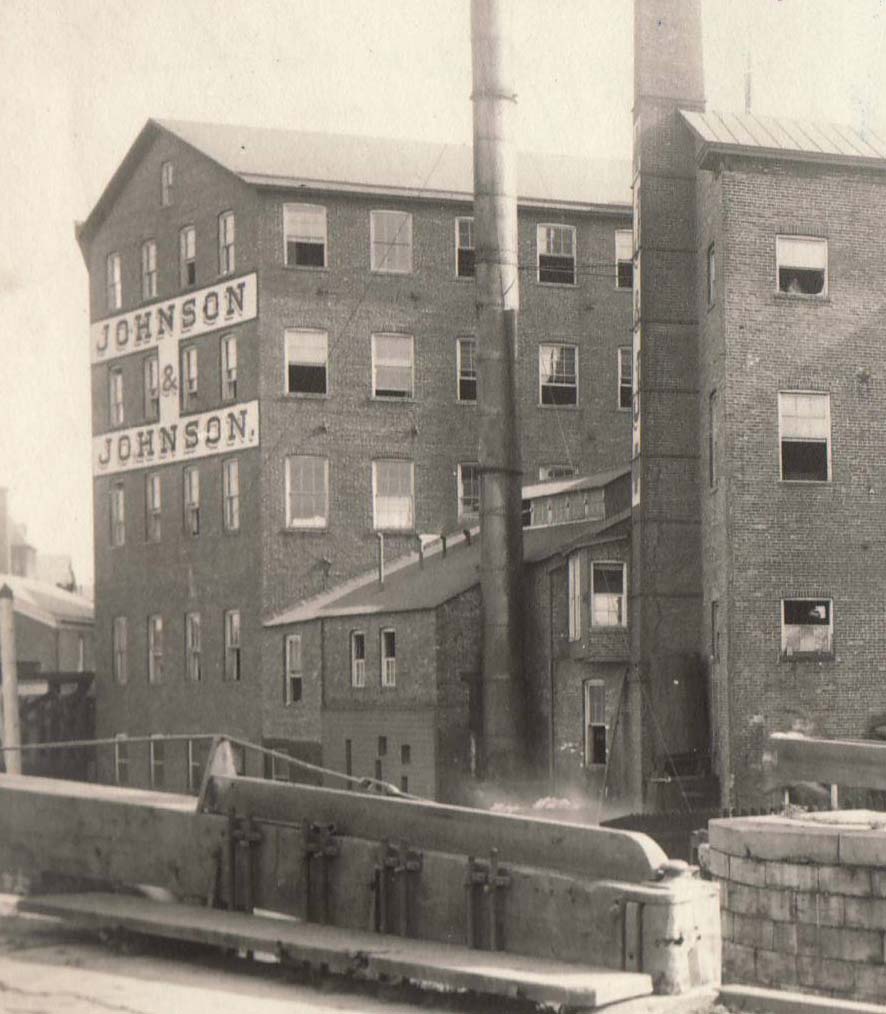
1893 photograph of Johnson & Johnson buildings in New Brunswick, N.J.
Today, with digital cameras and mobile phones, it’s second nature to take a picture of anything at any time. But in 1893 it was still a big deal, and we have some evidence that the photo shoot that resulted in these pictures was a big event at Johnson & Johnson.
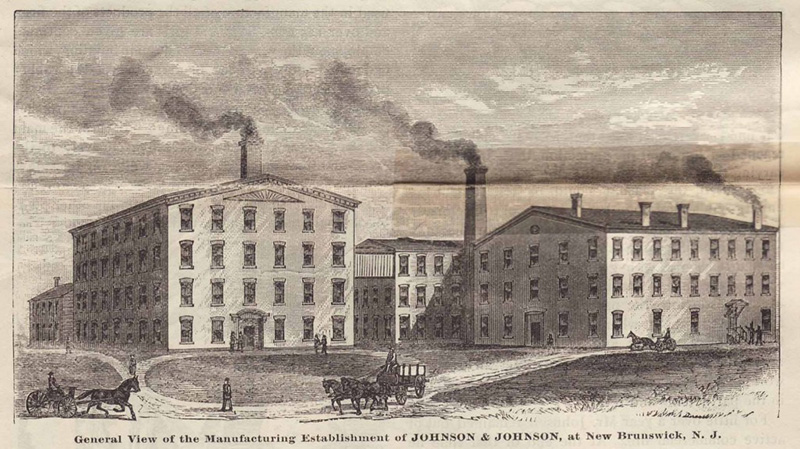
The oldest images we have of Johnson & Johnson from the late 1880s are illustrations, not photographs…like this image from an 1887 article about the Company.
By the 1890s, when photography was more, er…developed, and with Fred Kilmer in place as scientific director and chief publicity officer, the Company started to document what it was doing in a much more comprehensive way. The work that Johnson & Johnson was doing was really trailblazing, and the Company's flagship mass produced sterile surgical products were saving lives and helping transform surgery. The Johnson brothers and Fred Kilmer -- and in fact every employee -- knew that they were involved in something special and they wanted to keep a record of it. And thanks to recent technological innovations in photography, by 1893, keeping a visual record of the Company had become much easier.
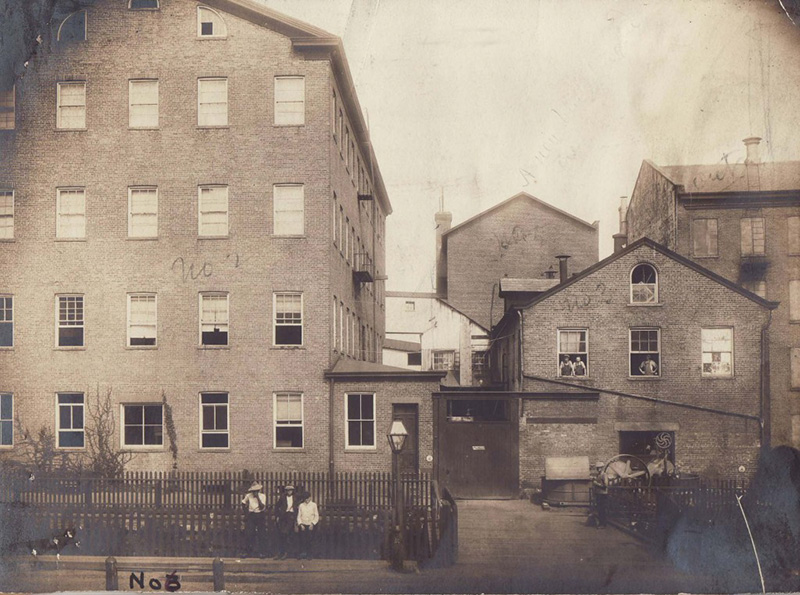
1893: Some of our earliest Mill Buildings
The innovation on which Johnson & Johnson was founded was the manufacture of the first mass produced aseptic surgical dressings and sterile sutures. During the time in which the Johnson brothers developed and perfected their revolutionary pre-prepared sterile surgical products, a parallel course of innovation was taking place in photography that allowed people to take pictures with pre-prepared, mass produced photographic film rather than individual plates that needed to be hand-prepared by the photographer.
In 1884, just nine years before the 1893 Johnson & Johnson photo shoot, George Eastman had perfected a process for making film instead of using photographic plates, which made photography much easier and less time consuming. Before that, photographers used dry or wet glass or metal plates. According to Wikipedia, the dry plates did not have the necessary quality or shelf life, and the wet plates meant that photographers had to coat a glass plate with wet chemicals in a multi-step process every time they took a picture….AND if that wasn't bad enough, they had to carry a portable darkroom with them in which to perform some of those steps.
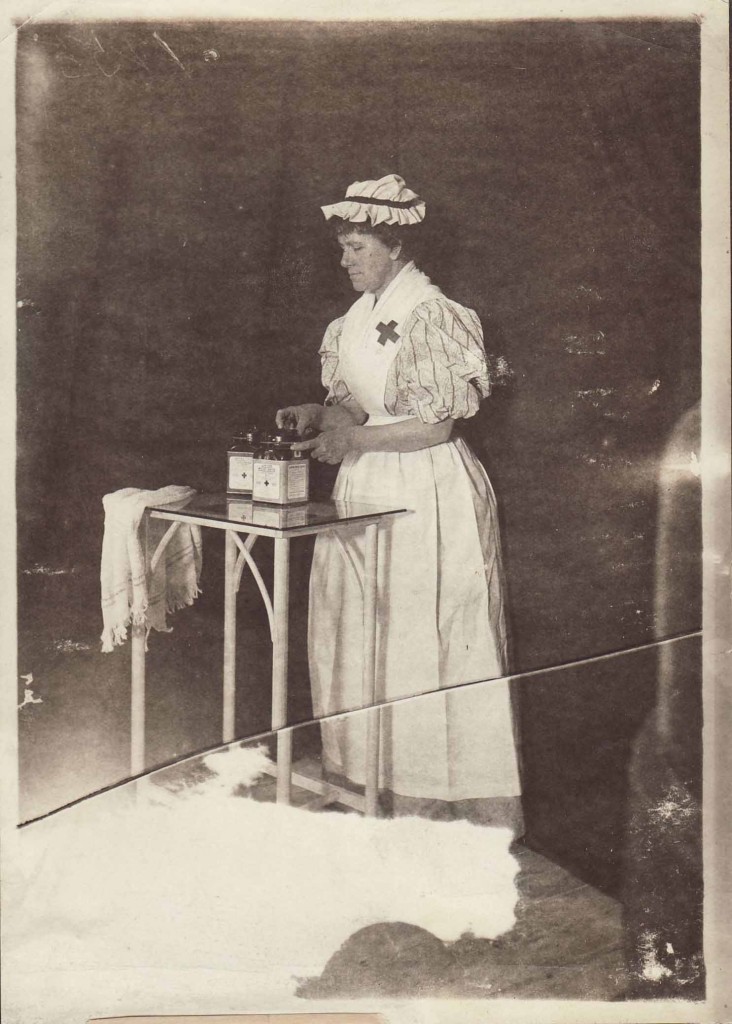
1892 photograph from our archives showing an employee packing aseptic gauze. This photograph was made from a glass plate negative: you can see the break in the glass photographic plate reproduced in the photo.
More improvements followed Eastman’s original innovation, and by the 1890s, whoever did the photography for the Johnson brothers had the option of using not just the plates but mass produced roll film, along with smaller and less cumbersome cameras. That made it much easier for our founders to start keeping a visual record of their growing business, and to document the innovations at Johnson & Johnson….like this 1891 photograph of one of our early sterilizers.
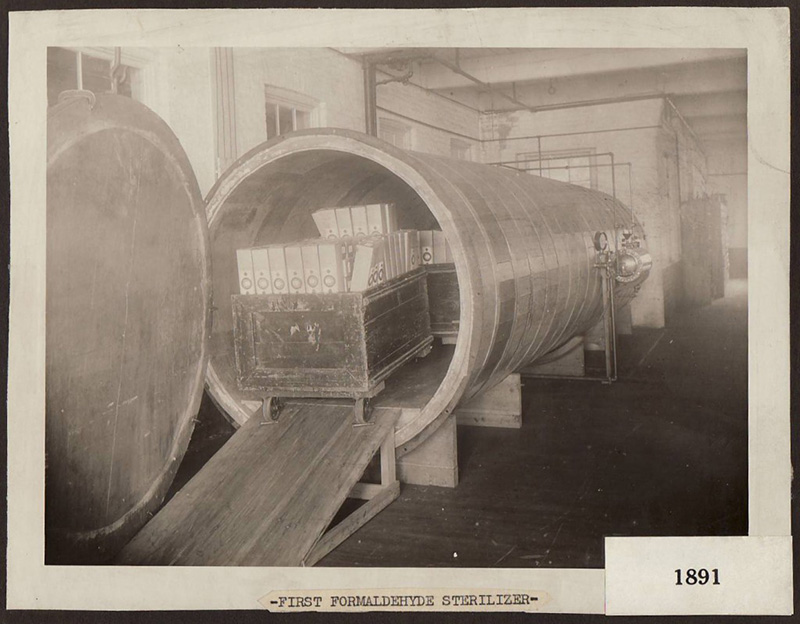
Or this photograph of the Aseptic Department, our early clean room.
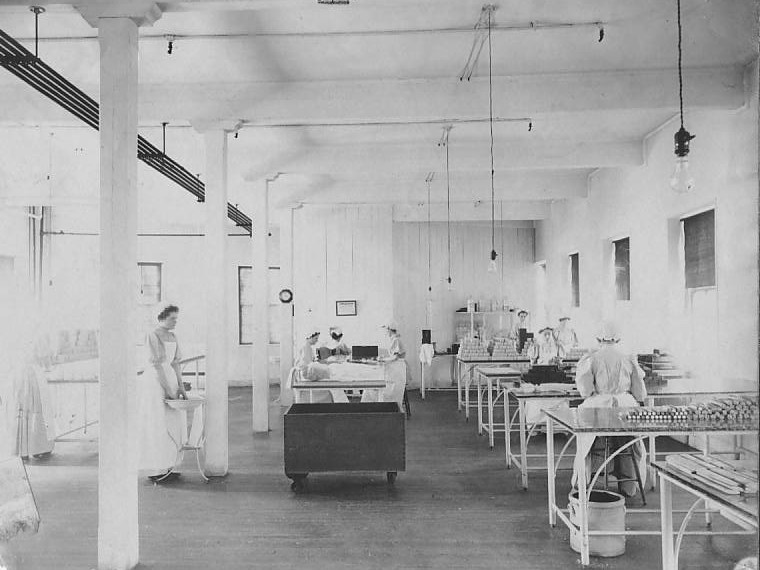
The many early photographs of Johnson & Johnson also give us a visual record of the Company’s rapid expansion and growth… reflected in the ever-increasing number and size of the manufacturing buildings in the photographs.

1886: one Johnson & Johnson Building
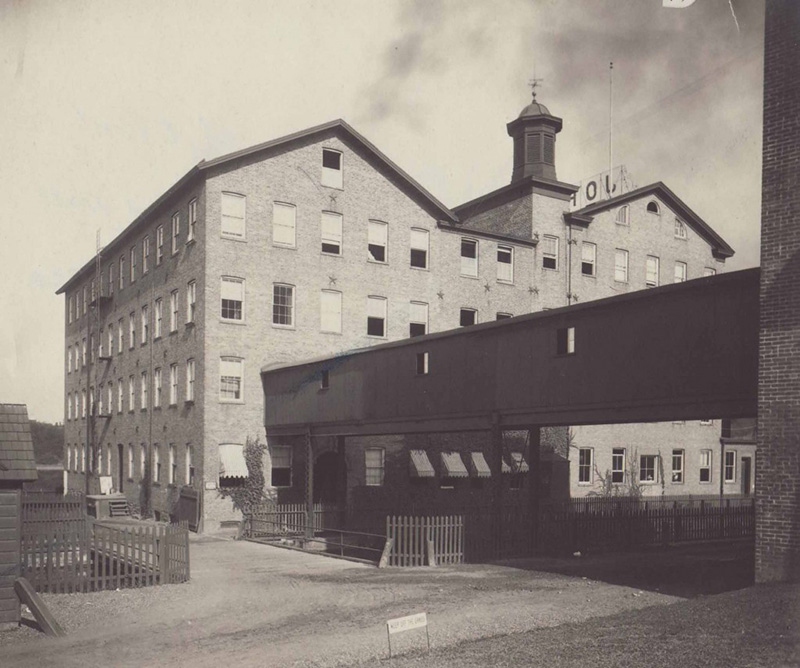
1893: more Johnson & Johnson buildings
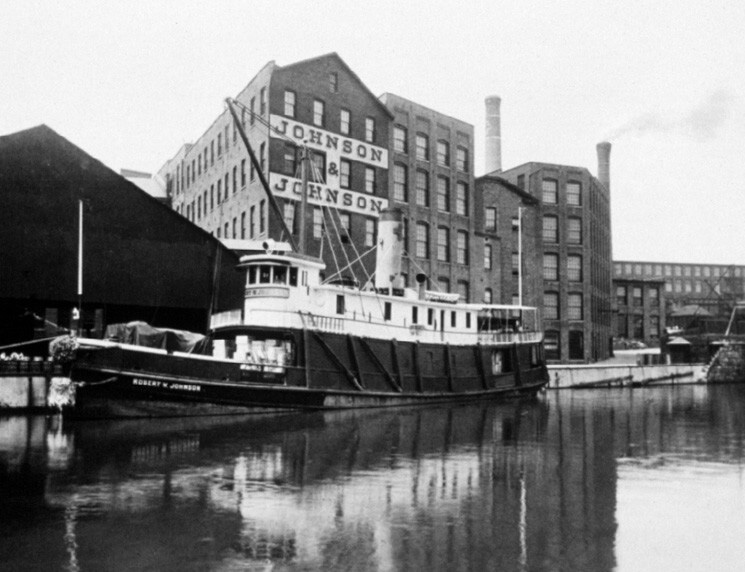
Circa 1900: Even more Johnson & Johnson buildings
So, getting back to 1893…what kind of camera did the photographer use? We don’t know. (Ironically enough, we don’t have a picture of it.) But given the amount of photographs taken, the photographer would probably have used one of the newer more portable cameras, mounted on a tripod to keep it steady.
Today, Johnson & Johnson companies routinely use photography. It’s so routine that most employees just walk past a photo shoot without a second thought during the work day. But in 1893, a photo shoot at Johnson & Johnson was a major event….and fittingly enough, we know that from some of the photos taken that day. Here’s one of the photos – it’s one of our historic manufacturing buildings next to the Delaware and Raritan Canal and Raritan River.
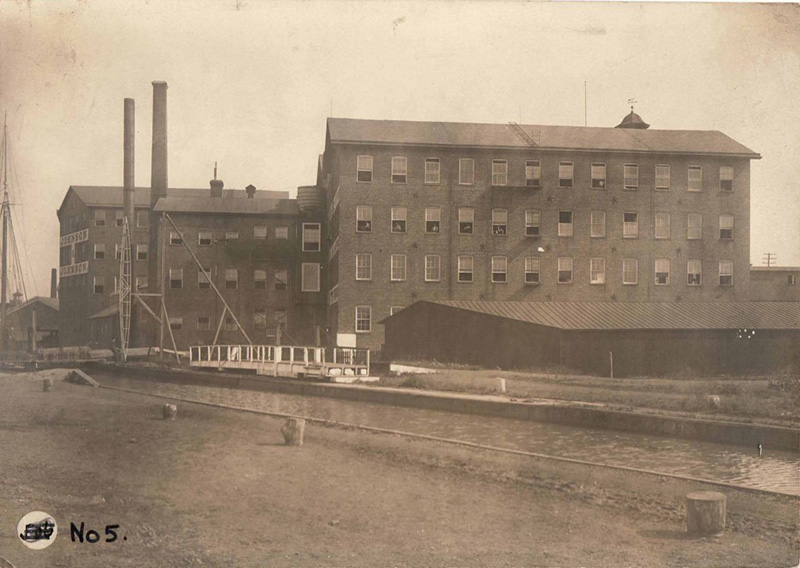
Old Plaster Mill and Delaware and Raritan Canal Lock
Here’s a close up of some of the windows. Alert blog readers will notice the employees who stopped what they were doing to stare out the window at what was in 1893 still an unusual sight at Johnson & Johnson: a photo shoot, using the recent innovations in photography to document innovation and growth at Johnson & Johnson.
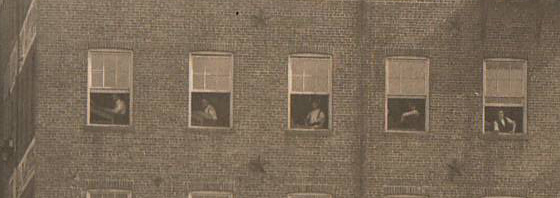
Employees in the Old Plaster Mill forever immortalized in the act of taking a break to watch the camera!
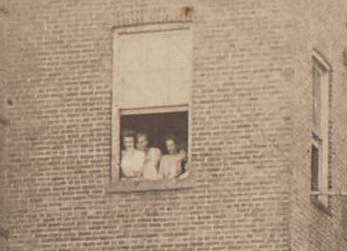
And in the Cotton Mill...
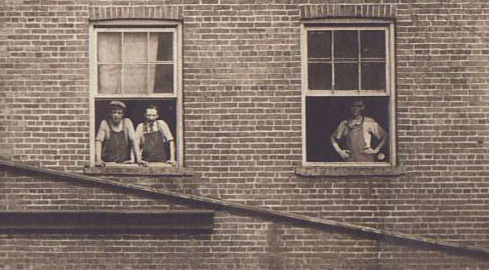
And the Bleachery!
So the next time you walk past a photo shoot, which in the last 117 years has gone from glass plates to film to digital cameras, you can appreciate how far we've come -- both at Johnson & Johnson and in photography. But one thing has remained constant: we're still taking pictures.

Another good addition to the history blog Margaret. Nice work!
- Brian
Thanks for the article. I found some of the pictures may be helpful in supporting the story of early stapling inventors and our co-obsession with sterility in the early 1900's...
Good work. I noticed the 1886 photo is printed backwards (see the 'Johnson & Johnson' sign at the gable)
In reply to by Dave
Dave,
Good catch! It's that way on the original image from our archives.
Margaret
I don't think it's backwards. It's facing the other direction and you are seeing it from behind.
Great picture of the early sterilizer. Is there anything in the archives about the cycle used for formaldehyde sterilization to see how close Dr. Kilmer came to 'modern' practice?
In reply to by Francis Boero
Francis,
I will take a look through the archives and let you know if we have anything!
Margaret
Thanks so much for this article! As a photography 'nut,' I truly appreciated all this information. Wonderful photos!